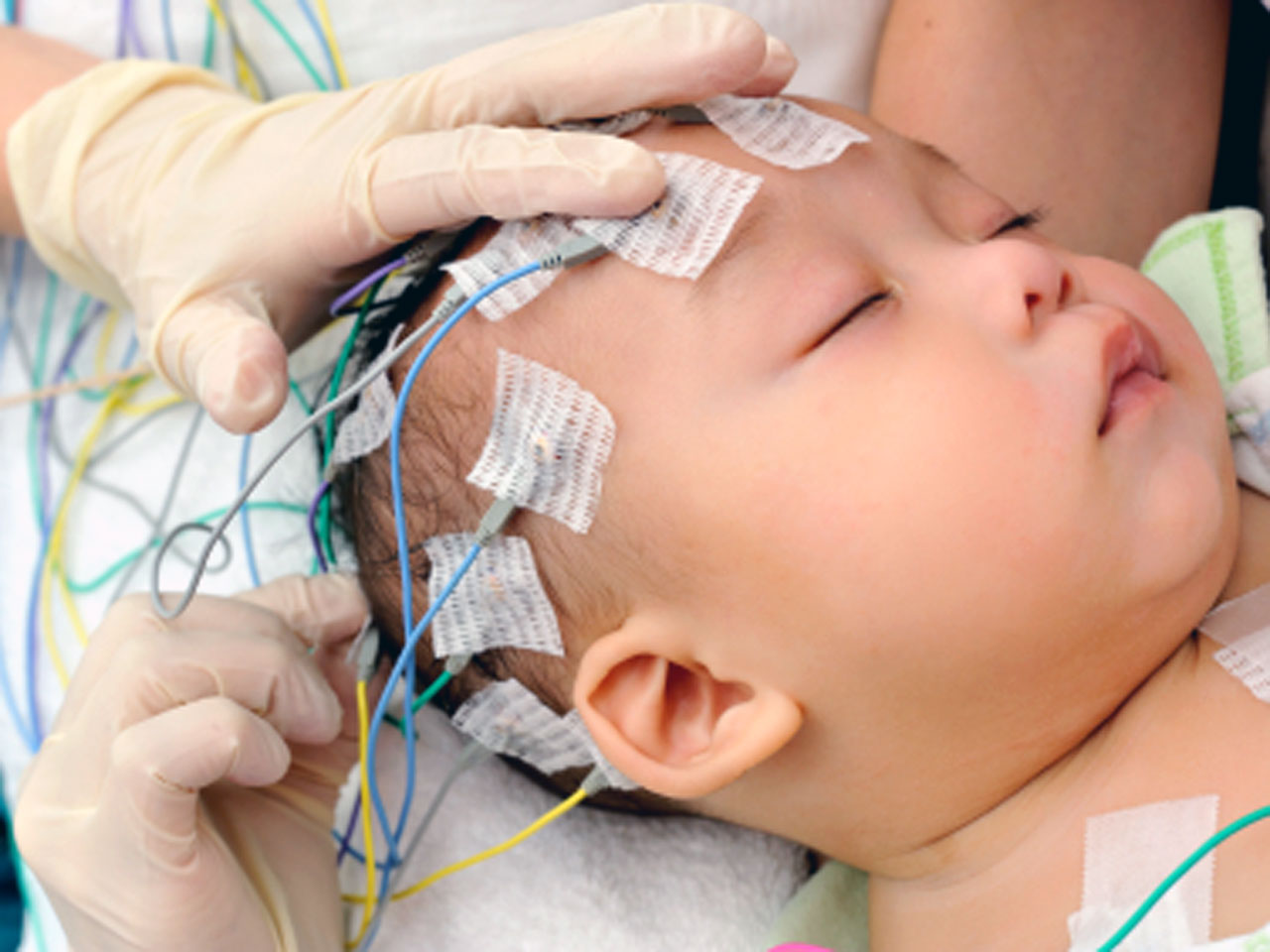Paediatric EEG

What is an electroencephalogram (EEG) for children?
An electroencephalogram (EEG) is a test that measures the electrical activity in the brain (brain waves). Small, round discs with wires (electrodes) are placed on the scalp during the test. The electrodes are not painful to your child. An EEG usually takes about 60 to 90 minutes.
Why my child need an EEG?
EEG may be indicated :
- Suspected Seizures/ seizure like episodes
- Evaluation pf paroxysmal movements
- Fainting episodes/ collapse
- Migraine/ headaches
- Evaluation and monitoring of epileptic patients
- Diagnosing epilepsy / genetic syndrome.
What are the risks of an EEG for a child?
Most medical procedures have some risks. Talk with your child’s healthcare provider about the risks and benefits of this test for your child.
The EEG has been used for many years and is considered a safe procedure. The test causes no discomfort. The electrodes record activity. They don’t stimulate nerves. In addition, there is no risk of getting an electric shock.
How do I help my child get ready for an EEG?
To prepare your child for an EEG:
- In an age-appropriate and reassuring manner, explain the test to your child and why it is being done.
- Wash your child’s hair the night before. Don’t put any oil, gel, or hairspray on the hair. If your child’s hair is long,
don’t braid it or put it up. Remove any hair extensions. They can interfere with the test. - If your child is taking any medicines, let the healthcare provider know before the test. You may need to stop
some medicines if they may affect the test results. - Follow instructions about when your child can eat before the procedure.
- Follow instructions about keeping your child awake the night before if your child needs to be sleepy during the test.
- On the day of the EEG, your child should not have any drinks with caffeine, such as caffeinated sodas, coffee, or tea.
What happens after an EEG for a child?
Once the test is done, the technologist removes the electrodes and washes off the glue with warm water and a washcloth. If some glue does not come off, you may need to wash your child’s hair at home. Ask the technician the best way to remove the glue without causing discomfort.
Your child can return to their normal routine. If seizure medicines were held for the test, ask the doctor if they should be given after the test.
A neurologist will read the EEG and talk to your child’s healthcare provider about the results. Schedule a follow-up appointment with your child’s healthcare provider to review the results of the test.
